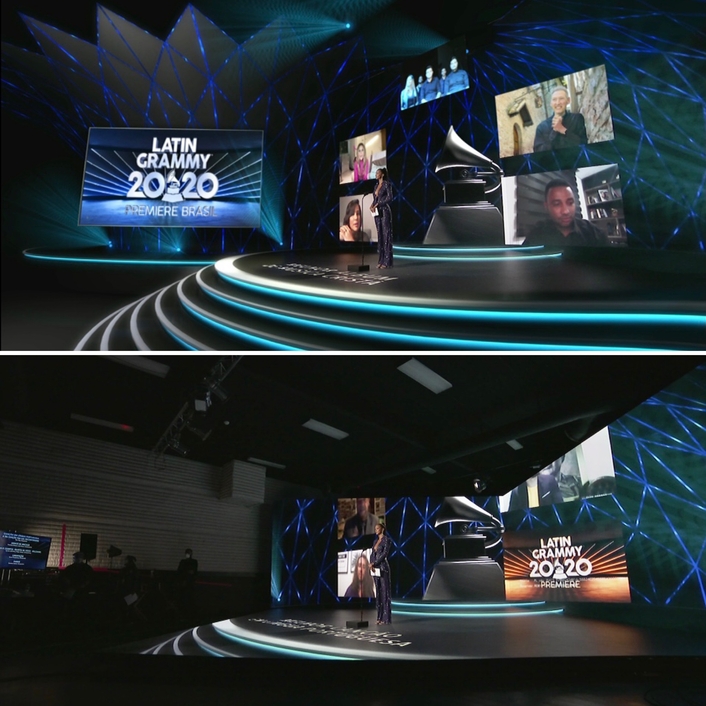LATIN GRAMMYS 2020
posted:
Designing for xR environments has opened a whole new world of creative possibility. In physical production, the designer is forced to work within the confines of many realities, from construction budgets to venue sizes, and simply real-world physics. Virtual scenery removes many of those constraints allowing focus on developing the visual concepts of the show and storytelling. Motion tracking camera technology and real-time rendering allows the designer to craft a dimensional space into which performers can be fully immersed.
advertisment
Working closely with Production Designer, Matt Russell, and Screens Producer, Juli Pritchard-Liu, Digital Flodur consisting of Kurtis Kennington and Allen Rudolf, collaborated to bring Matt’s design into a real-time VFX engine, Notch. Inside this software Digital Flodur created a virtual set with all of the aspects of a true award show set including working screens with video inputs being fed by the control room and LED strips with digital content that is controlled by a Disguise media server. Webcam feeds from 280 nominees from around the world are also fully inserted live into the virtual environment while the winner is announced. Notch’s real-time VFX gave us the ability to build the virtual lighting and set in a way to give every department on the production the tools they are accustomed to on any traditional production.
advertisment
Lighting Designer, Dave Thibedeau, designed the virtual lighting rig. Lighting is controlled by a Grand MA lighting console by programmer, Tiffany Spicer Keys. In order to achieve all of this Digital Flodur pioneered new techniques inside the software which included creating a virtual moving light fixture from scratch that has all the capabilities of the real fixtures, including focus, zoom, frost, gobos + rotation, and individual haze control. This gave the lighting team full control over the virtual lighting fixtures as they would in a real award show environment.
advertisment
At the heart of the XR virtual environment was NEP Sweetwater and their XR space at CenterStaging. NEP Sweetwater brought in Disguise GX2C media servers to power the extended set. This was coupled with a jib and steadicam cameras utilizing StYpe camera tracking. 280 remote nominee feeds were then streamlined into 8 feeds which were taken into NEP Sweetwater’s GX2C’s with alpha signals and playback sources from the Pacifico Television Engineering’s K-Frame switcher.This allows the TD to freely size, position, and move the screens around within the virtual environment. They also created the first custom live camera switching system for the live broadcast that is controlled by the TD’s System.
advertisment
The use of all this technology and artistry combined allowed the Latin Recording Academy to host their annual event honoring the achievements of the best of the music industry together in a cohesive virtual environment.







